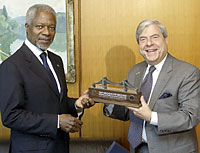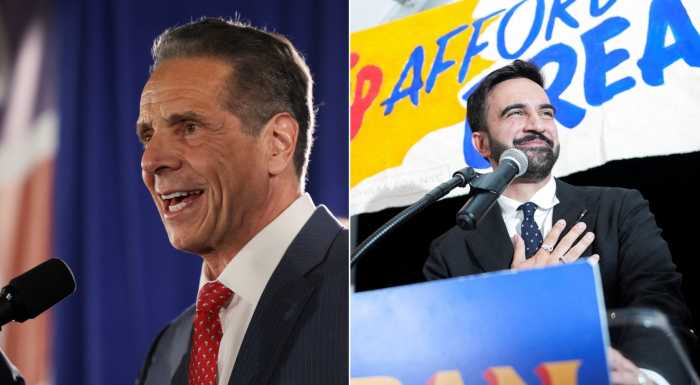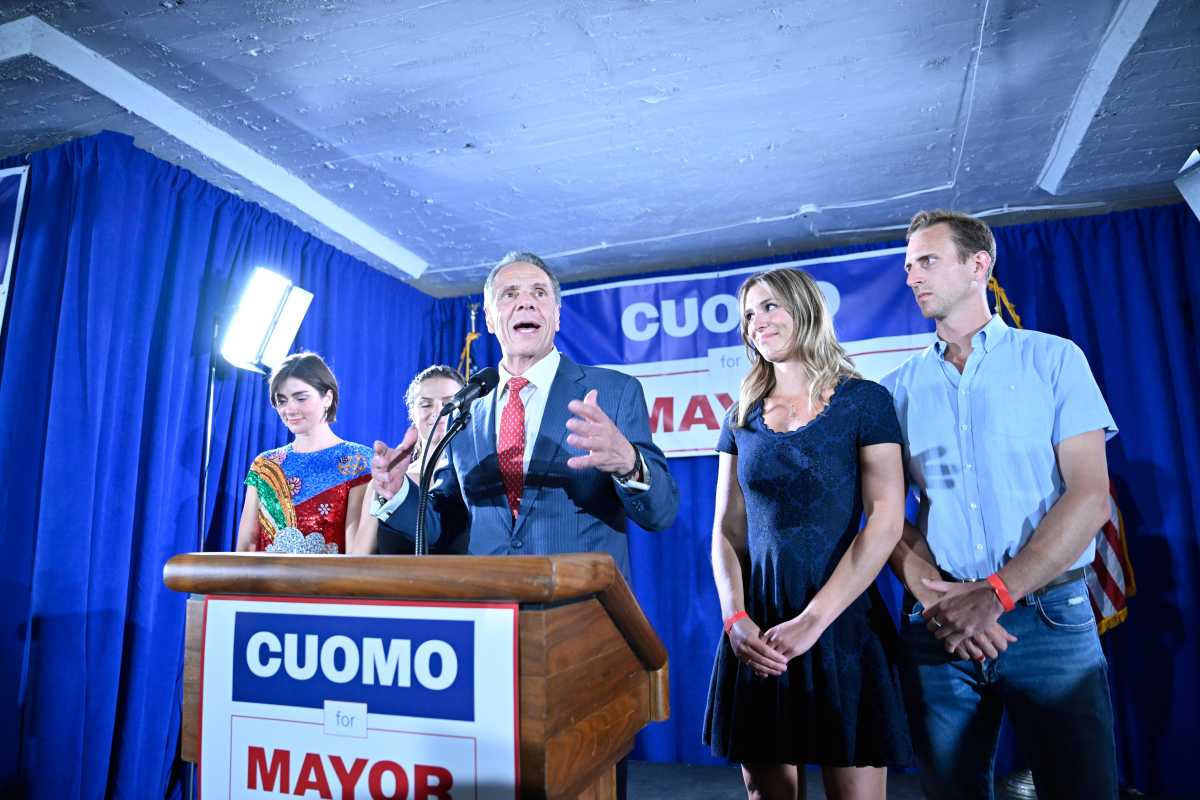Borough President Marty Markowitz has been lobbying United Nations officials
to relocate to Downtown Brooklyn during the planned reconstruction of
the international body’s general headquarters in Manhattan —
and the effort may be paying off.
Word out of meetings between Markowitz and U.N. Undersecretary General
Christopher Burnham this week was that Brooklyn is not just being looked
at for the seven-year relocation of their headquarters and General Assembly,
but is also being seriously considered for a permanent relocation of some
support staff.
“Undersecretary Burnham did say, even if they don’t decide upon
Brooklyn as a temporary facility, they still would consider Brooklyn for
a full-time expansion,” said Greg Atkins, Markowitz’s chief
of staff.
Atkins noted that the July 12 meeting, which included Brooklyn Chamber
of Commerce President Kenneth Adams and Downtown Brooklyn Council Director
Michael Burke, did not include any real estate developers.
“In fact, we aren’t even ready to be talking to developers in
Brooklyn, but we took a delegation of business, educational institution
and community leaders to go talk and we went to speak to Chris Burnham
about why Brooklyn would be a great possibility,” Atkins said about
the half-hour meeting.
“We went to the U.N., we made our pitch and came home,” he said.
Adams told The Brooklyn Papers this week that the U.N. was also eyeing
Brooklyn for a permanent relocation of some type.
“I think the thing that struck me about the meeting was first, that
the undersecretary made it clear that Downtown Brooklyn is certainly still
on their radar screen [for the temporary relocation], but the thing that
was a surprise was that he also mentioned his interest in Downtown Brooklyn
long-term, that it is a possible site for some function of the U.N. permanently,”
he said.
Crain’s New York Business reported Monday that the U.N. had narrowed
the potential sites for the 1 million square feet of temporary office
space to six locations in Manhattan and Brooklyn.
Burnham has said that the absolute deadline for signing a lease for the
temporary space, which is being called swing space, is fall 2006. The
space would need to accommodate its Secretariat staff of nearly 3,000
and General Assembly meetings within a hall big enough to seat 1,800.
Calls to Burnham’s office seeking comment for this article were not
returned by press time, but several sources confirmed the interest shown
by the U.N.
“If, in a sort of post-9-11 security environment, the U.N. were to
decentralize some of its functions and spread them around the city, [Burnham]
indicated that Downtown Brooklyn could be an appropriate site for the
permanent location for a support function of the U.N.,” said Adams.
“Obviously, that is far more lasting than the temporary swing space,”
he said.
Interest by the U.N. could help spur new development in Downtown Brooklyn,
which passed a major rezoning initiative last year but has yet to result
in a spate of new growth.
On May 10, The Brooklyn Papers reported that Secretary-General Kofi Annan
said the U.N. may have found commercial space in Downtown Brooklyn that
could serve its Secretariat and General Assembly needs.
The Brooklyn site being looked at, which Annan would not identify, would
cost the U.N. between $211 million and $220 million for the offices and
conference hall, much less than a Midtown Manhattan location estimated
to cost between $221 million and $230 million, plus another $45 million
for conference space, according to his May 10 report.
The Downtown Brooklyn Plan, signed into law last August, was created,
according to its advocates, to encourage the development of 6 million
square feet of office space by allowing high-rises up to 400 feet in some
zones, in order to attract businesses that are considering moving their
back-office space to New Jersey and elsewhere outside the city.
Joseph Sitt, a developer whose Thor Equities company owns both an above-ground
parking lot along Flatbush Avenue Extension at Willoughby Street and the
adjoining Gallery at Fulton Mall shopping center, said in May that he
had been contacted by U.N. officials about the 1.2 million-square-foot
office project he has in mind for that site.
The catch, he said after the U.N. report’s release, was that most
banks insist on a 10-year-lease from major tenants and not the seven that
the U.N. predicts it will need while its old home is being renovated.
That new tower would be just one of three city planners expect to flank
a 1.5-acre open space to be known as Willoughby Square.
Lee Silberstein, a spokesman for Thor Equities, said this week that the
site near the planned Willoughby Square, adjacent to 1 DeKalb Ave., was
indeed being considered by the U.N.
“There have been ongoing discussions,” he said.
Atkins said no developers were mentioned or discussed at the meeting with
Burnham.
“We didn’t get into specifics about that. We just wanted to
let them know that Brooklyn was open for business,” Atkins said.
“We’re not privy to any negotiations, so this is a complete
guess on my part, but my guess is they’re talking to property owners
and developers.”
Burke, whose organization devised the Downtown Brooklyn Plan, said this
week, “There are probably a number of developers that have approached
the U.N.
“The U.N. is actively looking in Manhattan and Brooklyn for swing
space,” he said. “Given all the development potential in Downtown
Brooklyn, we’re hoping that the U.N will decide to relocate here,
and I think there is a good possibly.”
Adams said bringing the U.N. to Downtown Brooklyn would be an enormous
coup.
“If Downtown Brooklyn was selected by the U.N. it would send a very
powerful message about the appeal of Brooklyn,” he said. “Every
time news comes out of the U.N., it’s coming from Brooklyn, N.Y.
That sends a very strong message,” he said.
“It would put us on a global map. It’s that type of message
that is critical to fulfilling the Downtown Brooklyn Plan.””























